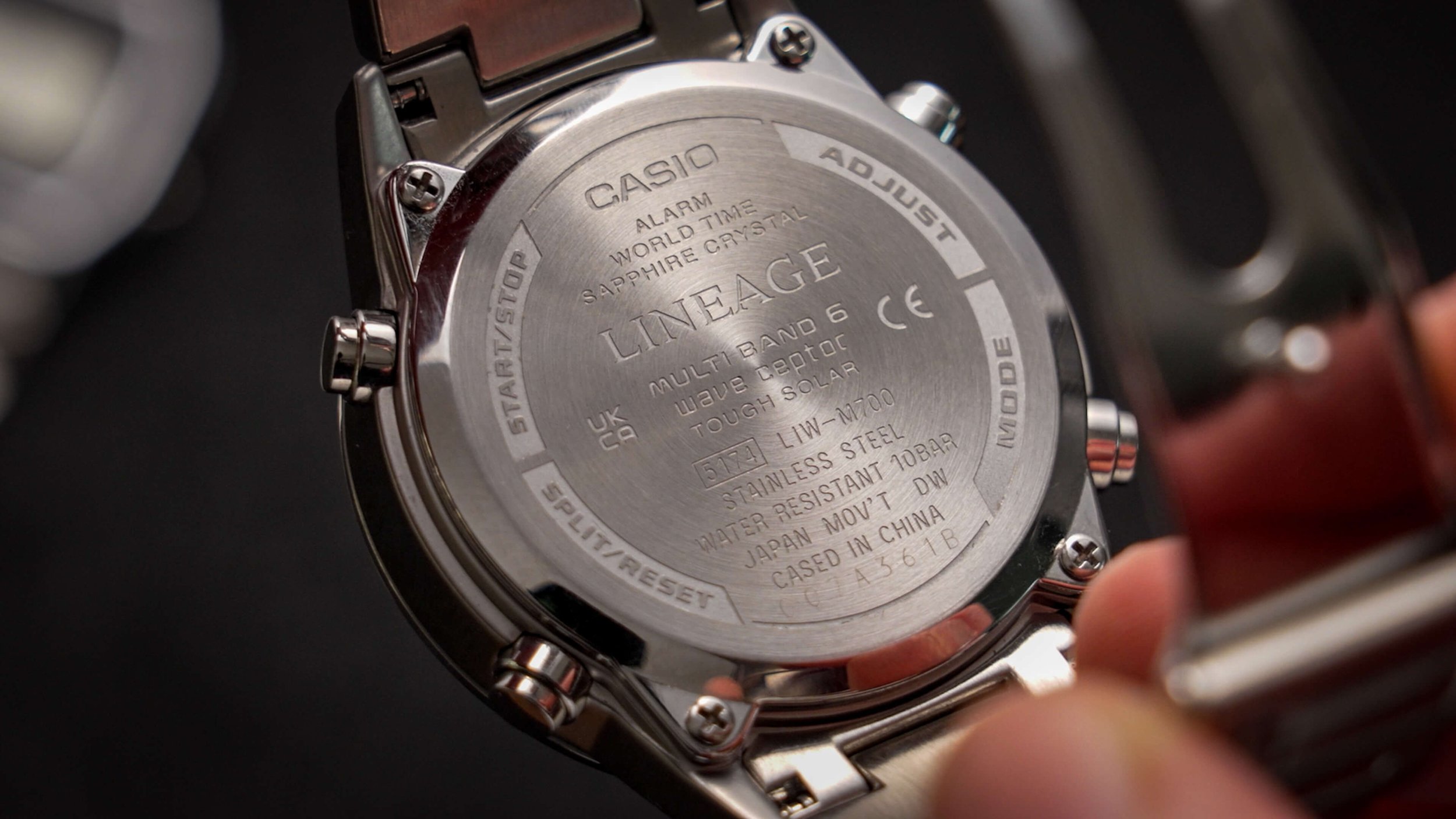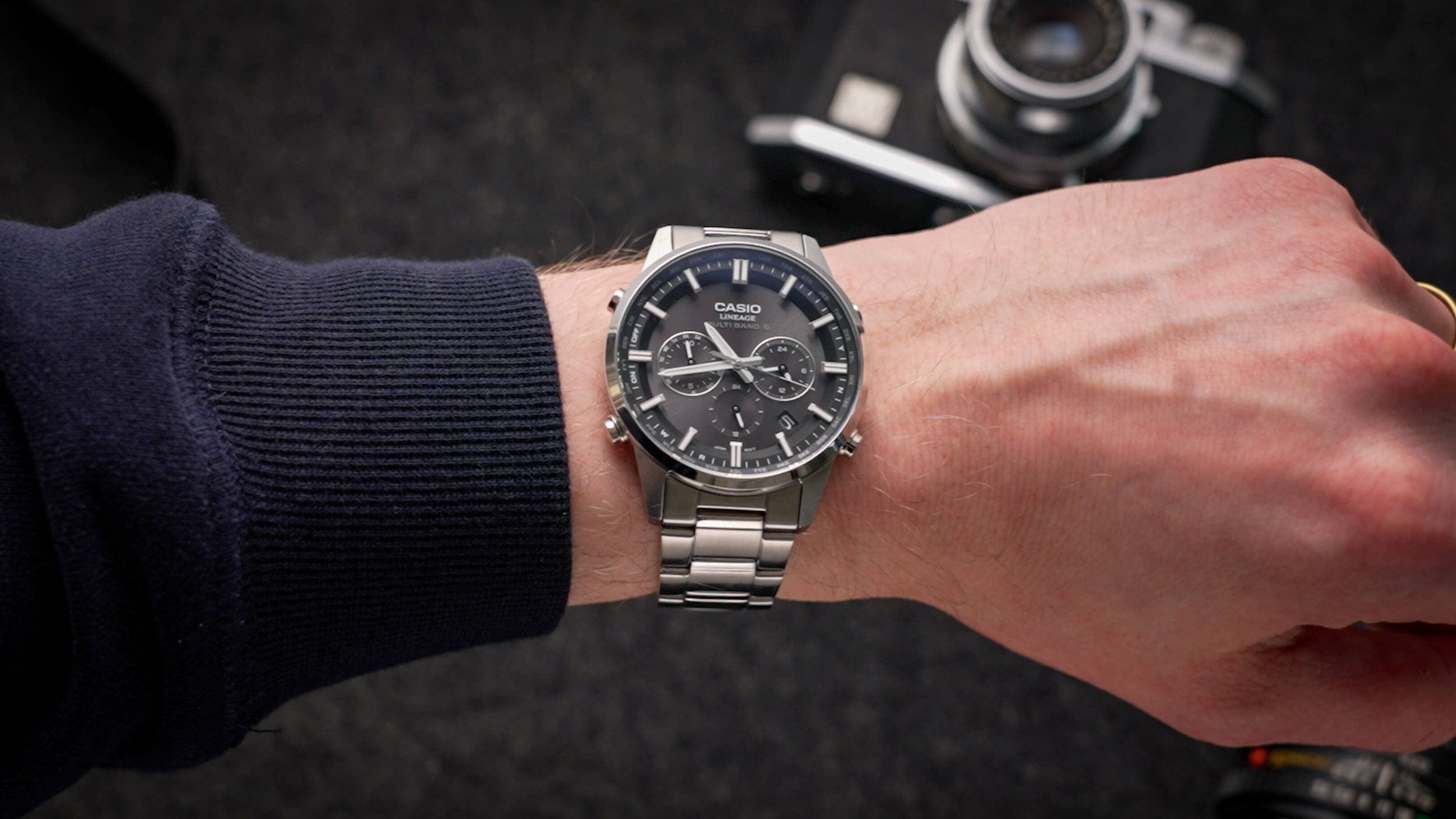Casio Lineage LIW-M700D | This Is Japan's Best-Selling Watch
(This page features affiliate links, for more information, click here.)
Citizen, Casio, Orient, Seiko. Many of the world's biggest and best watch brands are from Japan. What you probably didn't realize is that some of them are secretly keeping their best watches from you…and you don't even know about them! Until today.
Like other product retailers, watchmakers offer different lineups to each region to suit the taste and culture of that target market. For example, the American selection differs slightly from that in Europe or the rest of the world. This is called product localization.
The Japan-exclusive models have somewhat of a reputation as being unique, quirky, and well-made. They're sometimes special, limited edition versions or colors of existing models or wholly original pieces never sold outside of Japan.
Just how good are these watches, though? Can you even buy them outside of Japan? Are they even worth importing?
To answer those questions, I got JDM specialists Discovery Japan to mail me their best-selling watch. At the time of checkout, 589 shoppers had this in their cart; around 20x more than any other watch I could find on their site.
Casio Lineage LIW-M700D Review
As anticipated, this watch's packaging was pretty unfamiliar, with a navy faux leather box, rather than the sleeve or tin you're probably accustomed to.
So, this is it, the Casio Lineage LIW-M700D-1AJF. Casio's naming system is just as bad in Japan! I immediately noticed two things straight out of the box.
One was the finishing. Considering this watch retails for around $220 plus $50 in import fees, this watch looks absolutely stunning. The polishing on the bezel is phenomenal, with a mirror-finish effect indicative of a higher-quality timepiece.
Number two was, unfortunately, the quality control. I'm not sure how well it comes across on camera, but to my eyes, the 12 o'clock marker, the most important one, is kinked slightly clockwise. It might be picky, but I reckon any of you would have noticed this too. I probably just got unlucky here, as almost all of the Casios I've tried over the years have been good in this regard.
Now, this watch does have many redeeming qualities, which may still make it worth a punt.
Case Construction
Let's delve into that case, for example. Unlike the previous Lineage I reviewed, which was titanium, this piece uses the more conventional 316L stainless steel. The whole rumor of titanium being harder to work with must have some merit, as the finishing of this steel piece is leagues better. It not only has that immaculate bezel, but the rest of the build is super-sharp with precise edges and a neat, vertically brushed finish, all combining to leave a higher-end appearance than the price tag would suggest.
Outside of supercharged Chinese copy brands like San Martin, you really won't see much else that competes with the feel of this thing at the $300 price point.
Despite having a similar 4-screw arrangement, the case rear looks and feels more substantial than other Casios I've tried too. It maxes out at 10bar, which should suffice all but the keenest of divers.
Watch Features
As you can see, the Casio design team also kindly vomited just about every word in their sales dictionary onto the rear. Here's the short of it. The watch is solar, has a sapphire crystal, is radio controlled, can monitor and adapt to different time-zones, is made in China, except for the Japanese movement, and you can set some alarms with it. Phew.
Dimensions
The LIW is a versatile 39.5mm wide, and 46.3mm lug-to-lug. In all honesty, I'd have liked to see this be made a little thinner. At 11.3mm, it's not super-thick but does feel a little stout considering the other dimensions.
Still, the narrow lugs make this look a little smaller when fitted, meaning it's just about wearable for my slim 15cm wrist, but I think anyone with a wrist up to about 19cm should have no issues. Big wrists may have to look elsewhere, but you're not exactly short of options when it comes to chronographs.
Bracelet
We'll get to functions in a moment, but I need to touch on the bracelet first. In terms of construction, this is exemplary. It's got solid steel links throughout, including the end links, which have slots for easy detachment of the bracelet; something absent from most of the far more expensive Oceanus models. Aesthetically, it feels right at home here, with a polished central lip on each link that echoes the sparing use of polishing on the main body. It tapers elegantly to the clasp, which itself seamlessly covers the mechanism and operates very easily.
The main let-down here is the inadequate number of micro-adjustments. At just two closely-spaced holes, you may be struggling to find the perfect fit, as I was. My ideal size would have been slightly tighter than you can see here, though that would necessitate the removal of a full link; at which point it becomes uncomfortably tight.
Watch Dial
Under the sapphire crystal, there's something slightly magical going on. Look at those hour markers. They're jutting out there, balancing like a trapeze artist or a diving board, daringly hanging over the pool of grey beneath. Given the misalignment of the top index, I'm assuming these are indeed glued to the chapter ring individually, and miraculously, only around 40% of each appears to make contact with that flat surface. While they are certainly jarring at first, they undoubtedly make a unique impression; there's little risk of this watch coming across as generic.
The remainder of the design is classic Casio, with a flat, lumed handset and a grey, sunburst dial. It's symmetrical, fairly attractive, and well-detailed. While this dial does have the same solar capabilities as the titanium version, unfortunately, it lacks the expressive iridescent sheen that made the previous one so spectacular. This JDM chronograph hosts more of a standard grey sunburst which lacks that X-Factor.
Something that this dial does improve on is the whole vomiting of specification situation. Some of their Lineage watches have numerous lines of unnecessary text that would look more at home in a short story, whereas the LIW-M700D only has one feature listed on the front; that being "Multi-Band 6" right beneath the main logo. The darker tone does help it blend in, though I fail to see what purpose it serves. It doesn't add any branding prestige; surely, the wearer would already know the watch is radio-controlled too?
I can give a pass to the outer text, though, as those are essential for the watch's functionality. Like the other Lineage model, this one is entirely pusher-operated, forgoing the rotating crown used on the more expensive Casio Oceanus line. Here, there's four though, which provide a more symmetrical appearance than previous models; some people have called this the Frankenstein look as those pushers look a bit like the bolts coming out both sides of the monster's neck.
Functions
The pushers allow for adjustments, mode switching, start-stopping, and resetting, respectively. I won't bore you with the full details, as that's what the manual is for, but here's how you can get it up and running.
You can ensure the watch is in the normal time-setting mode by holding the bottom-left pusher for two seconds. It will beep to confirm that this is the case. You can then hold the top-left pusher for 5 seconds until you get a quick double-beep. The second hand will then point toward the currently selected time zone. You can use the lower-right pusher to cycle through the different time zones, which you can see indicated at the perimeter. When the correct city is selected, you can switch between standard time and daylight saving time if you want by using the upper-left pusher. If not, or once done, just hit the top-left button once to confirm the selection. The watch should then read the perfect time.
For anyone moving from a digital Casio, this procedure should be fairly familiar, though I'd probably have preferred the two right-hand pushers to be swapped, as I've found myself going for the bottom one out of habit, given that's the go-to placement on other models.
The left-hand subdial can help identify what mode you're in. AL for alarm. TR for the countdown timer. 0 is the stopwatch mode. The day lettering indicates you're in the regular timekeeping mode, while the remaining text shows whether you're in standard or DST time.
The Casio 5174 movement inside has a nice, quiet tick, and once more, the second-hand lines up perfectly with the markers (or at least where they're supposed to be!).
Final Thoughts
All those features are great, but why exactly is this watch so popular?
Having spent a couple of weeks with this watch, I think it comes down to one word: familiarity.
It's from a familiar brand, has a fairly safe, appealing design, a versatile size, a movement type that you barely have to think about, and enough performance and features to cover just about every application. There are no obvious weaknesses; It even has a sapphire crystal, which will never scratch. Buying this watch is an easy, safe choice, meaning you don't risk disappointment, whether for yourself or another. It also looks and feels more expensive than it actually is, especially with inflation! Just don't expect this watch to become a pinnacle statement piece, as this chronograph is designed to fit in more than it is to stand out.
















